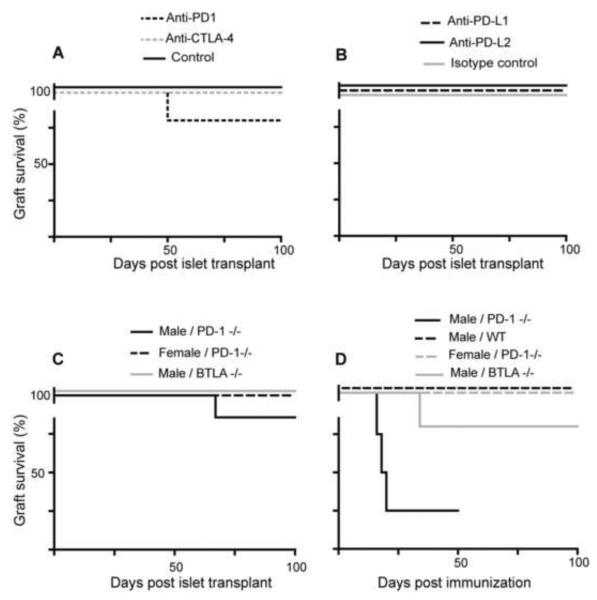Fig. 1.
PD-1 is required for tolerance but not acceptance of a weakly mismatched islet allograft. (A) Male B6 islets were transplanted to syngeneic female mice that were either untreated (black solid line; n=4; Control) or treated with blocking antibodies to CTLA-4 (grey dashed line; n=5) or PD-1 (black dashed line; n=5). (B) B6 male islets were transplanted to syngeneic female mice that were treated with anti-PD-L1 (black dashed line; n=5), anti-PD-L2 (black solid line; n=5) or isotype control (grey solid line; n=5). (C) Female PD-1−/− mice were transplanted with male PD-1−/− or WT islet grafts (black solid line; n=7) or female PD-1−/− islet grafts (black dashed line; n=3). Also, female BTLA−/− mice were transplanted with male BTLA−/− islet grafts (grey solid line; n=5). (D) 100–105 days post transplantation, female recipients were immunized with 4 × 106 male splenocytes. The groups included female PD-1−/− mice transplanted with male (black solid line; n=4) or female (grey dashed line; n=3) islets or female B6 (WT) mice transplanted with male islets (black dashed line; n=4) and female BTLA−/− mice transplanted with male islets (grey solid line; n=5).

